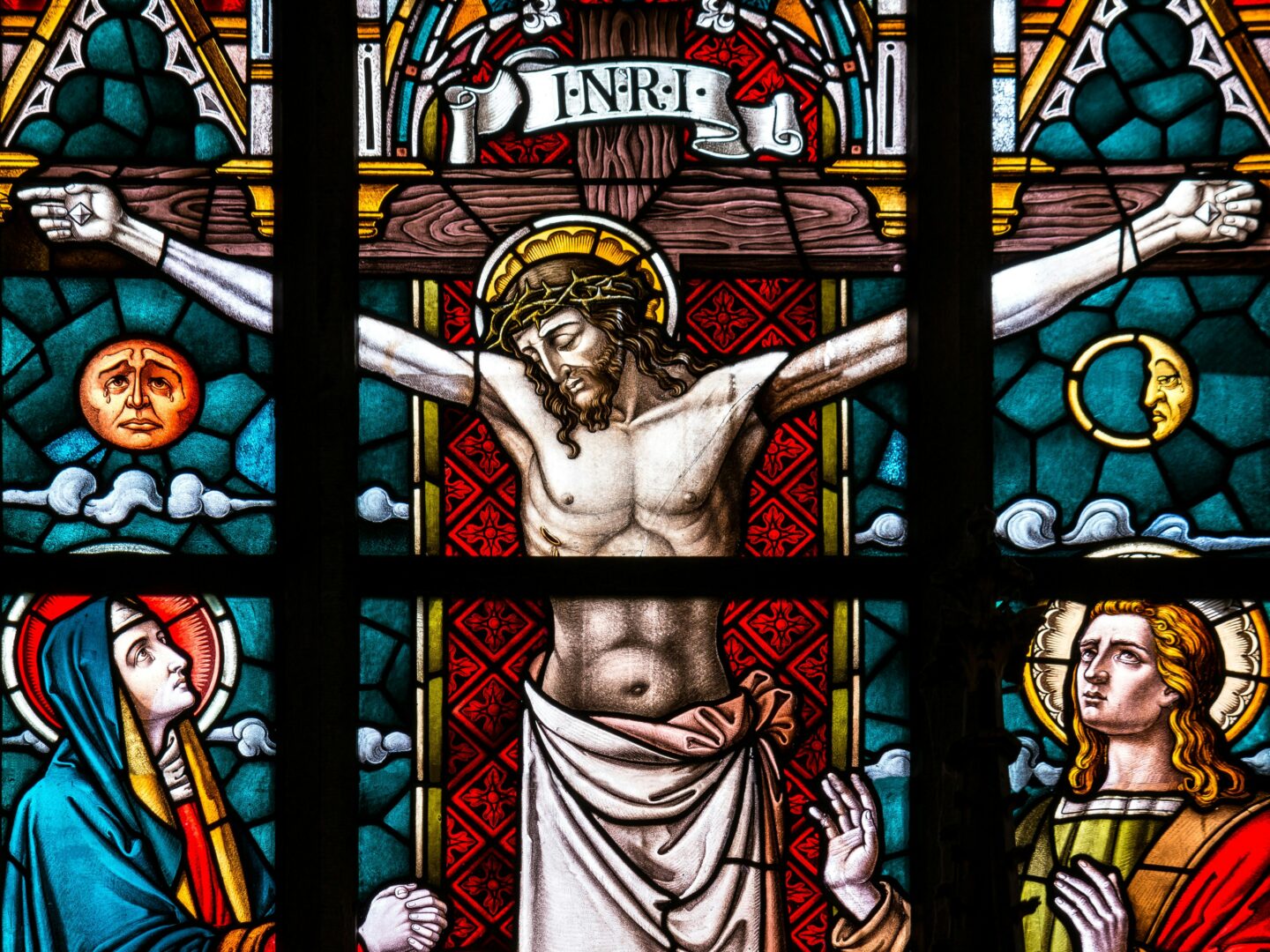I think of the Jews of the Beit Alpha synagogue as I sit here in my New York City apartment, watching our Christmas tree being hoisted, the boxes of lights and ornaments in heaps, the child scampering in excitement, orchestrating, advising — kibitzing, as my father would say. I cannot imagine that the 6th-century men of the Beit Alpha community decided on their interior design without at least some of the agonizing ambivalence I feel each December.
Beit Alpha was discovered in 1928, in the northern part of Israel, by a group of farmers who were digging irrigation ditches. It had long aisles marked by pillars, and rows of seats to accommodate worshipers. There was place to keep an ark and a torah. The floor, made entirely of mosaic tile, depicts a traditional Old Testament scene: the binding of Isaac.
The remarkable thing about the Beit Alpha synagogue, though, is its rather startling un-Jewish decor. The central panel in the mosaic floor depicts the 12 signs of the zodiac — Sagittarius, Capricorn, Aquarius and so on. And in the bull’s eye of that zodiac chart, crowned and enthroned on a horse-drawn chariot, sits Helios, the Greek god of the sun.
The biblical prophets and laws might warn severely against the worship of idols and foreign gods, but Beit Alpha provides incontrovertible evidence that real people disregard those warnings at least some of the time. The Jews of Beit Alpha were sufficiently influenced by and absorbed into the dominant culture — pagan culture — that they saw fit to decorate their temple with images drawn from the world around them. However they managed to reconcile the more stringent and fundamental teachings of their faith — I am the Lord your God, you shall have no other Gods before me — with the pictures on their synagogue floor is a private struggle lost to time.
The December dilemma, as it’s come to be called, holds special anguish for Jews like me, who have so thoroughly embraced and been accepted by the broader culture that not celebrating Christmas is our most distinguishing Jewish trait. In my family of origin, we marked birthdays with lobster dinners and went to school on Yom Kippur. But though we were happy to partake of another family’s Christmas goose — or ham — we rigorously shunned the trimmings for ourselves. No stockings. No Santa. No tree. We may have lived and looked like everyone else the rest of the year, but we found our Jewishness in an annual sense of alienation at Christmastime.
Raised as I was in a family that valued experience and knowledge of the world more than the traditions of its tribe, it is perhaps no surprise that I married a lapsed Catholic who grew up eagerly anticipating Christmas morning. So now, though I would never consider myself anything but Jewish, I find that fir trees and Santa and imaginary flying reindeer are part of my life. Just as Helios gazed up at the Jews of Beith Alpha each shabbat, Martha Stewart glass bulbs twinkle at me when I wander the apartment at night, requiring me to explain myself.
So here goes. In my maturity, I have come to believe that it’s better to wrestle with faith and religious tradition outright than to find it in periodic alienation. Now my daughter and I go to temple each Saturday, where the prayers, the songs and the community there give us an experience of faith that far exceeds an annual display of Grinchiness.
Because I’m married to a man I love, the traditions of his childhood matter to me. I want them in our lives as much as I want matzoh balls at Passover — even as that tree gives me primal twinge. All polls say that people are marrying outside their religions and ethnicities at increasing speed, which means all of us will continue to have to navigate these questions of identity with as much generosity as we can muster. My rabbi likes to tell the story of the patriarch Abraham, who leaps up when three strangers visit his tent to offer them something to eat: milk and meat together, in violation of his own dietary laws. Their need, the lesson goes, mattered more than Abraham’s at that moment. Letting the world in means changing how you see yourself, and I’m guessing no one knew that better than the Jews of Beit Alpha.
